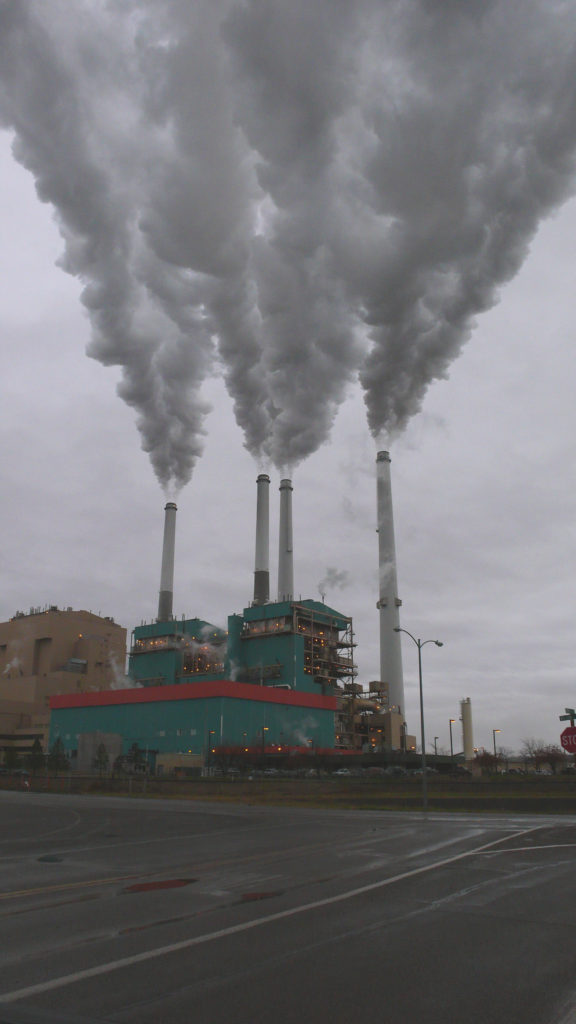By Anne Hedges
Some songs are great in the beginning but become so repetitive they quickly become irritating. How many times do you need to hear the same chorus before it gets stuck in your head and drives you batty? The saga surrounding coal and the future of Colstrip is starting to sound that way. It’s high time for Montana to change the radio station.

Driven by sweeping changes to energy markets, coal plants across the country have been closing at an unprecedented rate. In the West there are numerous examples of utilities telling politicians and the public that their local coal plant is financially stable and can be expected to operate for another 10 or 20 years. Jobs are safe, they say. Tax revenue will keep flowing, they promise. And communities have no reason to worry.
Then, one day, out of the blue, they announce the plant is closing, with little to no notice. Does this refrain sound familiar? It should. Last year at Senator Daines’ Energy Summit, a Talen representative told the crowd that the worst case scenario for the Colstrip plant was a 10-15 year life – despite the mounting economic pressure. A year later they announced early closure of two of the four units.
Pandering politicians only add to the annoying refrain. They promise a bright future for coal, despite mountains of economic evidence to the contrary, then when the house comes tumbling down, they inevitably blame overbearing environmental regulations or extremists because it helps rile up their base.
The facts tell the real story. Colstrip wasn’t shut down by environmental regulations. When announcing the closure of Units 1 & 2, Talen, the plant operator and second largest owner, said it was because the plant’s economics just don’t pencil out anymore. It wasn’t environmental regulations. Only politicians looking for a quick political soundbite did that. Perhaps they need a subscription to the Wall Street Journal, which correctly pins coal’s demise on utilities turning to lower cost gas and renewables.
It’s ironic that environmentalists are easier on the coal industry than the market. MEIC and Sierra Club understood that a transition period for the closure of Units 1 & 2 was a good idea and in 2016 agreed to allow those two older units to operate until July 2022. For that we were vilified. But the market is a harsh mistress. According to Talen, it was losing money largely due to poor economics.
Political finger pointing aside, this cycle has repeated itself over and over again like the refrain from a bad country song. In Arizona, Nevada, Colorado, and even in Montana with the recent announcement of the closure of the Lewis and Clark Station, we hear about these decisions not while the company is contemplating them but instead only after the decision is made. That’s business. Utilities don’t want to scare their investors, so they wait until they have an airtight financial case and then make an announcement – usually to the surprise of the workers and community.
But there is something we can do about it. We can move past the “La Bamba” refrain and find a new song. We can plan for a future in which the customers of Colstrip’s electricity continue to get power from Montana – the kind of energy they’re looking to buy (clean). It will fill the same transmission lines, employ hardworking Montanans, pay fees to farmers and ranchers, and generate taxes.
Or we can swim in the river of denial and wait for the same old refrain to play again and again. Then we can feign surprise when utilities suddenly announce that market forces make continued operation of the 35-year old Colstrip units 3 & 4 uneconomic, and we’re left with nothing.
It’s our job to “see for miles and miles” and make sure a one-horse town doesn’t end up as “a horse with no name.” We should plan for replacement power, replacement jobs, and a thorough cleanup of the Colstrip plant. The state still doesn’t have cleanup bonds for the extensive contamination caused by the ash ponds associated with Colstrip Units 1 & 2, let alone the larger Units 3 & 4 (despite the fact the ponds have been leaking since the 1980s). The state signed an agreement with the owners seven years ago to require such bonds yet remains empty handed for the cleanup at these ash ponds. Perhaps it’s time for the state to stop waiting and require bonds immediately. Proper cleanup will create new jobs and new economic development opportunities for the community for decades to come. What are we waiting for? The Colstrip area has great wind, solar, and energy storage potential. With its world class transmission system, the Colstrip area could become a clean energy hub. But that won’t happen unless there’s an honest acceptance of today’s energy market and honest planning for the future. Governor Bullock’s task force on transmission for renewable energy development last year was a great start. It’s time to either double down and make Montana’s clean energy potential a reality or wait until that bad song’s refrain drives us batty.

